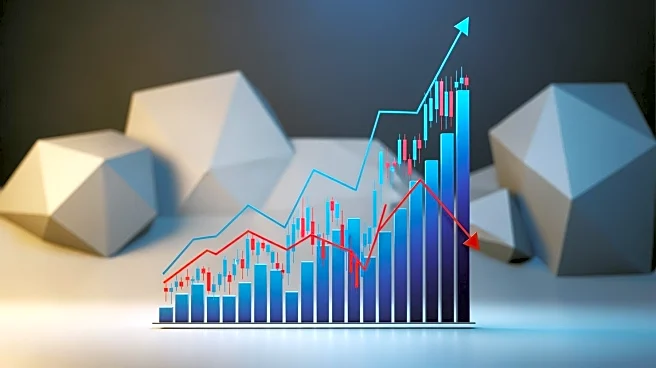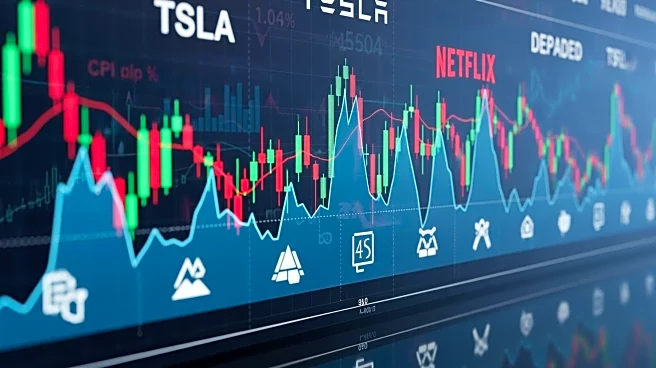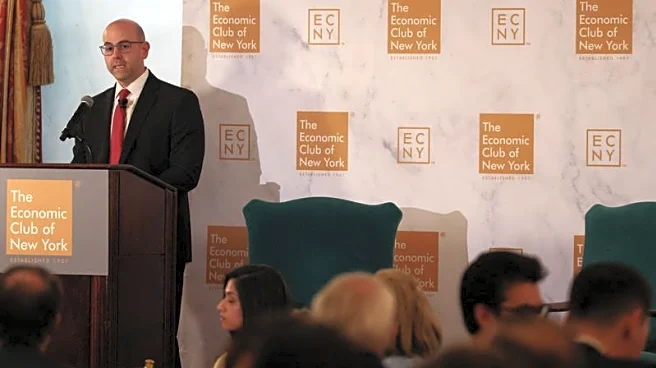What's Happening?
This week, the Federal Reserve is closely monitoring the release of the Consumer Price Index (CPI) for September, which has been delayed due to a government shutdown. This data is crucial as it may be the last
significant economic indicator available before the Fed's upcoming decision on interest rates. The CPI report is expected to show a continued rise in prices, albeit at a slower pace than in August. This comes amid a backdrop of economic uncertainty, with other government reports also delayed. Additionally, major companies like Tesla, Intel, and Netflix are set to release their earnings, which could provide further insights into the economic landscape. Tesla's earnings are particularly anticipated due to its recent advances in robotics and artificial intelligence, while Intel's report follows a series of strategic investments.
Why It's Important?
The CPI data is pivotal for the Federal Reserve as it considers its monetary policy, particularly in light of a weakening labor market. A higher-than-expected inflation rate could influence the Fed to reconsider its current trajectory of lowering interest rates. This decision will have significant implications for the U.S. economy, affecting borrowing costs for consumers and businesses. The earnings reports from major corporations like Tesla and Intel will also provide insights into the health of key industries, such as electric vehicles and technology, which are critical to economic growth. The outcomes of these reports could impact investor sentiment and market stability.
What's Next?
Following the release of the CPI data, the Federal Reserve will need to decide on its interest rate policy. If inflation is higher than anticipated, the Fed may face pressure to maintain or even increase rates, despite the weakening labor market. Conversely, if inflation is lower, it could continue with rate cuts to stimulate economic activity. The earnings reports from Tesla, Intel, and other major companies will also be closely watched for indications of future industry trends and economic resilience. Stakeholders, including investors and policymakers, will be keenly observing these developments to gauge the broader economic outlook.












